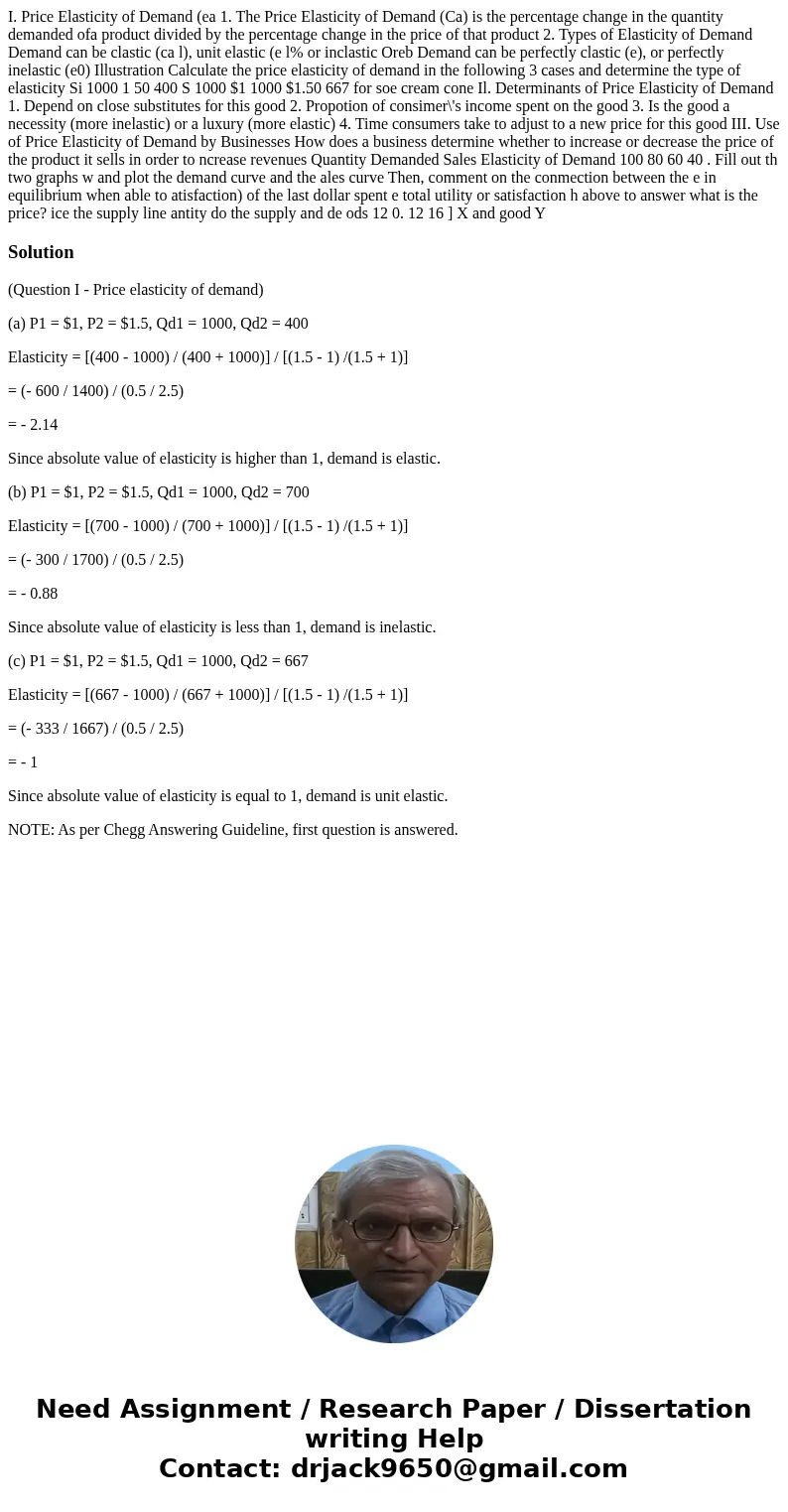I. Price Elasticity of Demand (ea 1. The Price Elasticity of Demand (Ca) is the percentage change in the quantity demanded ofa product divided by the percentage change in the price of that product 2. Types of Elasticity of Demand Demand can be clastic (ca l), unit elastic (e l% or inclastic Oreb Demand can be perfectly clastic (e), or perfectly inelastic (e0) Illustration Calculate the price elasticity of demand in the following 3 cases and determine the type of elasticity Si 1000 1 50 400 S 1000 $1 1000 $1.50 667 for soe cream cone Il. Determinants of Price Elasticity of Demand 1. Depend on close substitutes for this good 2. Propotion of consimer\'s income spent on the good 3. Is the good a necessity (more inelastic) or a luxury (more elastic) 4. Time consumers take to adjust to a new price for this good III. Use of Price Elasticity of Demand by Businesses How does a business determine whether to increase or decrease the price of the product it sells in order to ncrease revenues Quantity Demanded Sales Elasticity of Demand 100 80 60 40 . Fill out th two graphs w and plot the demand curve and the ales curve Then, comment on the conmection between the e in equilibrium when able to atisfaction) of the last dollar spent e total utility or satisfaction h above to answer what is the price? ice the supply line antity do the supply and de ods 12 0. 12 16 ] X and good Y
(Question I - Price elasticity of demand)
(a) P1 = $1, P2 = $1.5, Qd1 = 1000, Qd2 = 400
Elasticity = [(400 - 1000) / (400 + 1000)] / [(1.5 - 1) /(1.5 + 1)]
= (- 600 / 1400) / (0.5 / 2.5)
= - 2.14
Since absolute value of elasticity is higher than 1, demand is elastic.
(b) P1 = $1, P2 = $1.5, Qd1 = 1000, Qd2 = 700
Elasticity = [(700 - 1000) / (700 + 1000)] / [(1.5 - 1) /(1.5 + 1)]
= (- 300 / 1700) / (0.5 / 2.5)
= - 0.88
Since absolute value of elasticity is less than 1, demand is inelastic.
(c) P1 = $1, P2 = $1.5, Qd1 = 1000, Qd2 = 667
Elasticity = [(667 - 1000) / (667 + 1000)] / [(1.5 - 1) /(1.5 + 1)]
= (- 333 / 1667) / (0.5 / 2.5)
= - 1
Since absolute value of elasticity is equal to 1, demand is unit elastic.
NOTE: As per Chegg Answering Guideline, first question is answered.

 Homework Sourse
Homework Sourse